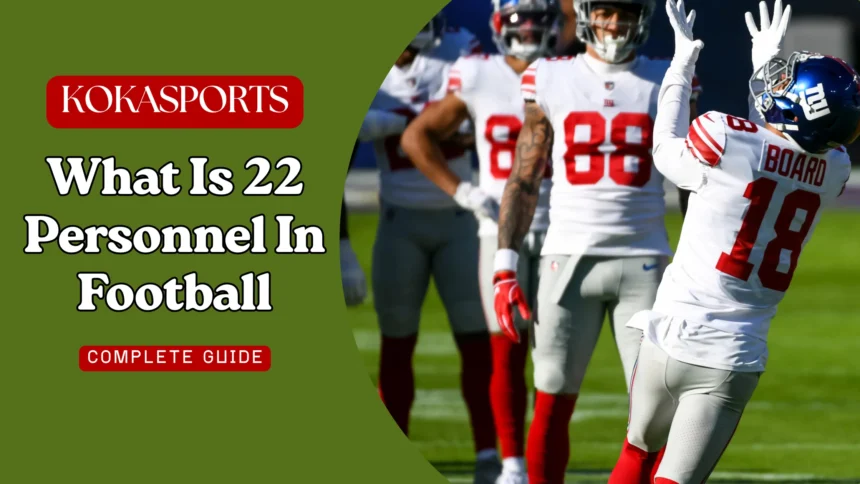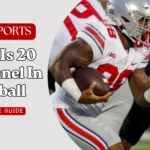The world of football strategy involves much more than just calling plays and running them. One of the most important aspects that defines how NFL teams operate is their use of different personnel groupings. These groupings determine which players are on the field and what kind of plays a team can run. Among these various packages, What is 22 Personnel in Football: 22 personnel stands out as a powerful, physical approach that emphasizes the run game and creates mismatches through sheer size and strength.
Offensive Personnel in Football: The Foundation of Strategy
Offensive personnel packages represent the specific combination of players that a team puts on the field for any given play. Instead of constantly substituting individual players, football teams organize their offenses around these standardized groups. Each personnel package includes the quarterback plus ten other players, typically consisting of the five offensive linemen and five skill position players in various combinations.
The beauty of this system lies in its flexibility. By changing which types of players are on the field, teams can signal their intentions, create favorable matchups, or disguise their actual plans. A team might bring in two tight ends and two running backs to suggest a power running play, then surprise the defense with a play-action pass. Alternatively, they might spread the field with four wide receivers to attack through the air.
The numerical system for naming these packages is straightforward and logical. The first digit indicates the number of running backs, while the second digit shows the number of tight ends. The remaining skill positions are filled by wide receivers. This simple formula allows coaches, players, and even fans to quickly identify what type of offensive personnel is on the field and anticipate what might happen next.
Read Also: What is 20 Personnel in Football? NFL Offensive Personnel Packages
What is 22 Personnel in Football?
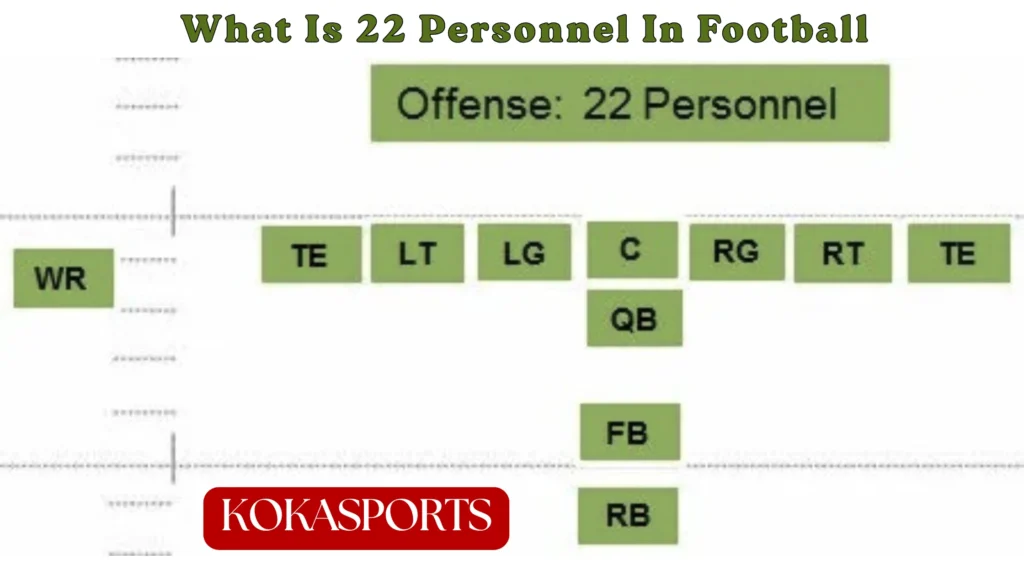
22 personnel in football refers to an offensive personnel grouping that features two running backs and two tight ends, leaving room for just one wide receiver. This heavy package prioritizes physicality and power running over finesse and speed. When you see 22 personnel on the field, you’re looking at a team that wants to establish dominance at the line of scrimmage.
The typical alignment might include a traditional running back plus a fullback in the backfield, with both tight ends on the field positioned on or near the offensive line. The lone wide receiver usually lines up away from the congested side, potentially drawing attention from defensive backs while the real action happens in the trenches.
This package excels in specific situations where gaining yards through physical dominance matters more than spreading the field. Picture a team facing third-and-two, or operating near the goal line. The defense knows a run is coming, but with so many blockers and big bodies creating holes, stopping it becomes a serious challenge. The two backs can lead block for each other, while the tight end duo provides additional power at the point of attack.
The Role of Grouping and Personnel Packages in the NFL
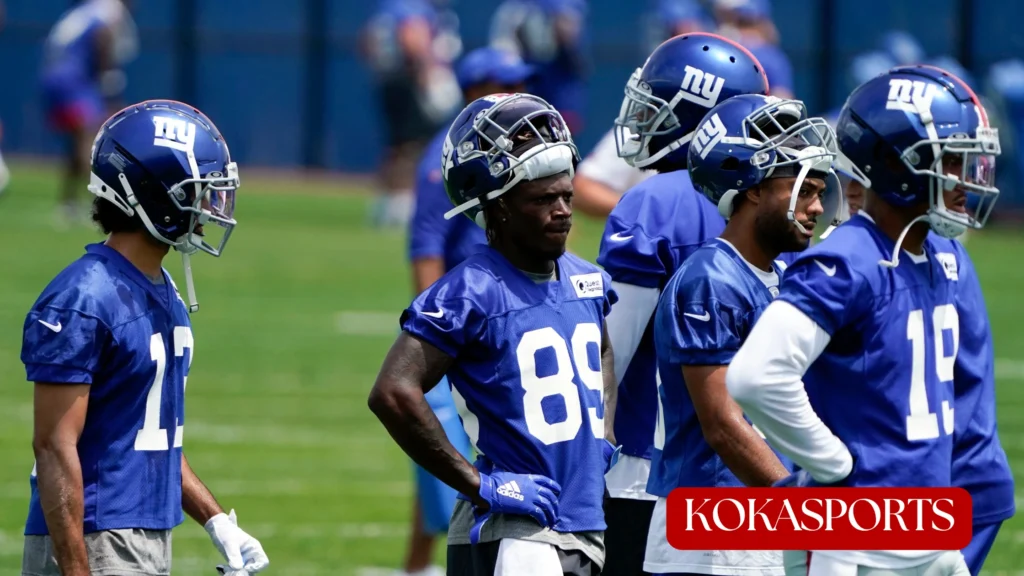
The evolution of NFL personnel groupings tells the story of how football strategy has changed over decades. In the 1970s and 1980s, heavy sets with multiple running backs and tight ends dominated the league. Teams built their identities around punishing ground games that wore down defenses through the fourth quarter.
Then came the passing revolution. The spread offense transformed football at every level, and 11 personnel (three wide receivers, one running back, one tight end) became the dominant package. Teams discovered they could create space, attack defenses horizontally, and score more efficiently through the air. By the 2010s, some NFL teams were running 11 personnel on over 70% of their snaps.
However, football strategy operates in cycles. As defenses adapted by fielding smaller, faster players to counter spread attacks, smart offensive coordinators saw an opportunity. Heavy packages like 22 personnel could exploit these lighter defensive alignments, creating physical mismatches that favored the offense. The 2025 NFL season has shown renewed interest in these power concepts, with several teams incorporating more heavy personnel into their playbooks.
Different personnel groups serve distinct purposes:
- 11 personnel remains the most common, appearing in nearly every NFL offense
- 12 personnel (one running back and two tight ends) offers balance between pass game and run
- 21 personnel features two running backs with one tight end, favored in traditional West Coast schemes
- 13 personnel brings three tight ends for maximum blocking power
- 20 personnel uses two backs with zero tight ends, emphasizing speed over size
- 10 personnel spreads the field with four receivers and one running back
Advantages and Disadvantages of Using 22 Personnel
The strengths of using 22 personnel are clear and compelling. First, the sheer number of blockers creates natural advantages in the running game. With two tight ends and a fullback available for blocking assignments, an offense can generate multiple-person blocking schemes that overwhelm defensive fronts. The offensive line gets help on both sides, and defenders find themselves outnumbered at the point of attack.
Second, this package offers unexpected versatility in the pass game. While defenses typically respond to 22 personnel by bringing in extra linebackers to stop the run, this creates opportunities. Tight ends matched up against linebackers in coverage represent favorable mismatches. A good receiving tight end can exploit these situations, and play-action passes become devastatingly effective when the defense crashes down to stop the anticipated run.
Third, teams run the ball with 22 personnel to control game tempo and manage the clock. In situations where protecting a lead matters more than scoring quickly, this package allows teams to grind out first downs, keep the clock moving, and limit the opponent’s possessions.
Key advantages include:
| Benefit | Explanation |
|---|---|
| Superior blocking | Multiple tight ends and backs in the backfield create numerical advantages |
| Physical dominance | Big bodies and power schemes wear down defensive fronts |
| Play-action effectiveness | Heavy run emphasis makes play-action passes highly effective |
| Clock control | Extended drives limit opponent’s opportunities |
| Short-yardage reliability | Maximum power for short-yardage situations and goal line stands |
However, 22 personnel comes with significant limitations. The reduced number of receivers on the field limits route combinations and reduces the offense’s ability to spread defenses horizontally. Defensive coordinators can load the box with extra defenders, confident that the offense won’t beat them deep with just one wide receiver.
Additionally, this package can become predictable. When defenses see 22 personnel, they expect run-heavy play calling. Smart defensive coaches stack the box with extra defenders and dare the offense to throw. Unless the quarterback and receiving tight end can consistently win through the air, the offense may struggle to move the ball consistently.
Comparison of Offensive Personnel Groupings in Football
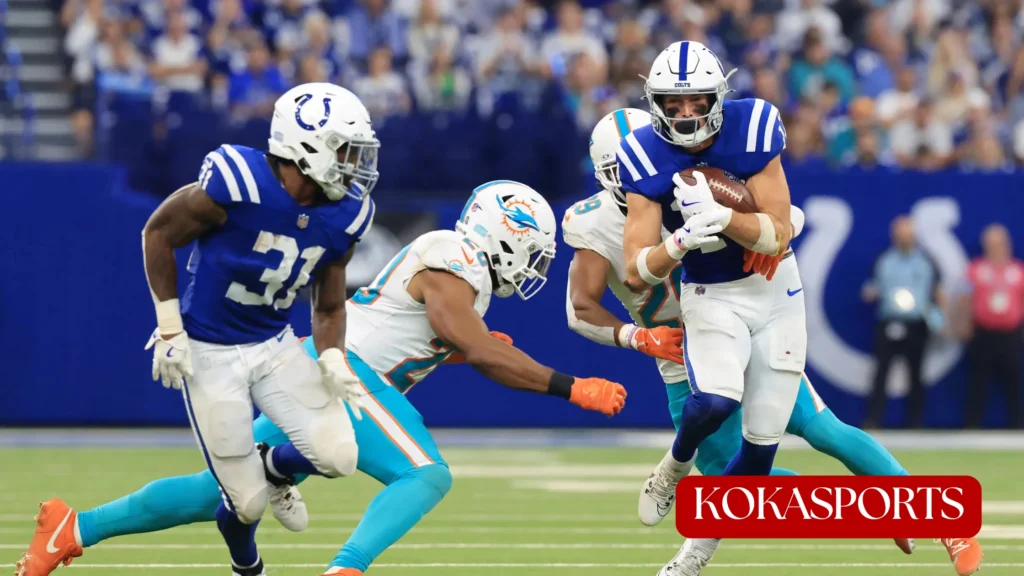
To fully appreciate what 22 personnel brings to the table, consider how it compares to other common football offensive personnel packages:
11 personnel represents the modern default setting. With three wide receivers, one running back, and one tight end, this package maximizes flexibility. Offenses can run or pass with equal effectiveness, and defenses must defend the entire field. Most NFL offensive personnel packages default to 11 personnel because it forces defenses into base packages that don’t give away their intentions.
12 personnel (also called 12 personnel) splits the difference between spread and power concepts. The extra tight end provides additional blocking power without completely abandoning the passing game. Many modern schemes build around 12 personnel because it maintains enough eligible receivers to keep defenses honest while adding the flexibility to run the ball effectively.
21 personnel features two running backs with a single tight end. This package was a staple of older NFL offenses and remains effective in specific situations. The extra back and two tight ends isn’t available here, but the two backs can create interesting backfield action and motion possibilities.
13 personnel goes even heavier than 22 personnel by featuring three tight ends. This rare package appears almost exclusively in goal line and other extreme short-yardage situations where the offense needs maximum blocking power and doesn’t care about threatening the deep pass play.
32 personnel represents the ultimate power package with three running backs and 2 tight ends. This exotic grouping rarely appears in modern NFL games but can create chaos in specific situations, particularly on trick plays where multiple ball-carriers create confusion.
01 personnel exists at the opposite extreme, featuring zero running backs and just one tight end with four receivers. Some spread concepts use this package to maximize space and create favorable matchups in the passing game.
How NFL Teams Use 22 Personnel in the Modern Game
While 22 personnel appears less frequently than lighter packages, several NFL teams incorporate it strategically. Teams with elite blocking tight ends and powerful offensive lines find the most success with this approach. The San Francisco 49ers, for example, have built offensive schemes that can shift between 11 personnel spread concepts and 22 personnel power running on consecutive plays.
The key to modern 22 personnel usage lies in unpredictability. Teams that exclusively use this package in obvious running situations make life easy for defenses. However, teams that mix 22 personnel into their regular play-calling force defenses to prepare for it constantly, even if it appears only 10-15% of the time.
Defenses typically respond to heavy offensive personnel by substituting bigger, slower linebackers and defensive linemen. This creates a strategic chess match. If the offense successfully runs the ball, they can sustain long drives and control the game. If they struggle, however, the reduced number of wide receivers on the field makes it difficult to change tactics mid-drive.
Historical NFL offenses built around power running made 22 personnel (or similar heavy packages) their bread and butter. Teams from the 1970s through 1990s regularly featured two tight ends and multiple backs, grinding out yards through physical superiority. These offenses succeeded because defenses of that era were built to handle such attacks, creating relatively even matchups.
Key Players in 22 Personnel Formations
The success of 22 personnel depends heavily on having the right players on the field with specific skill sets. At running back, teams typically feature a primary ball-carrier plus a fullback or second back who excels at blocking. The lead back must possess vision, power, and patience to follow blocks through congested running lanes. The second back serves primarily as a blocker, though modern versions often catch passes out of the backfield as well.
The tight end positions demand versatility. At least one of the two tight ends must be an effective blocker capable of handling defensive ends and linebackers at the point of attack. The second tight end might also focus on blocking, or could be a receiving specialist who creates mismatches when defenses stack against the run. The best 22 personnel offenses feature two complete tight ends who can both block and catch, making the package truly unpredictable.
The one wide receiver in 22 personnel faces unique challenges. With so much attention focused on the congested side of the formation, this receiver often faces single coverage or even gets ignored entirely if defenses commit fully to stopping the run. However, this creates opportunities for explosive plays when the offense does decide to throw. Teams typically use a bigger, more physical receiver in this role rather than a speed specialist.
The offensive lineman group becomes even more critical in 22 personnel. With so many players are on the field focused on blocking, the offensive line must create initial movement at the line of scrimmage. Defensive fronts loading up to stop 22 personnel present difficult challenges, and the offensive line cannot afford breakdowns in technique or communication.
Formations and Plays Out of 22 Personnel
22 personnel appears in various formations, each creating different advantages and play possibilities. The I-Formation places both running backs directly behind the quarterback in a straight line, with tight ends on each side of the formation. This classic look emphasizes power running off-tackle and up the middle, with the lead back serving as a battering ram for the tailback.
Strong and weak formations shift the two tight ends to the same side, creating an obviously heavy side for running and a light side that might feature the lone receiver. This unbalanced look forces defenses to adjust their alignment, potentially creating favorable angles for the offense.
Wing formations bring tight ends into the backfield or position them just behind the line of scrimmage in wing positions. These alignments add deception and create different blocking angles while maintaining the physical advantages of heavy personnel.
Common offensive plays from 22 personnel include:
- Power runs: Off-tackle plays with pulling guards and multiple lead blockers
- Inside zone: Combination blocking schemes up the middle
- Lead plays: The fullback leads through the hole with the tailback following
- Play-action passes: Deep shots off heavy run action
- Bootlegs: The quarterback rolling away from the run action with tight ends releasing into routes
- Screens: Using tight ends as additional blockers on receiver or back screens
The Future of 22 Personnel in Football
As we progress through the 2025 NFL season, 22 personnel continues evolving rather than disappearing. Modern offensive coordinators recognize that personnel grouping flexibility creates strategic advantages. Teams that can operate effectively from multiple personnel groups force defenses to prepare for more possibilities, spreading their practice time and creating opportunities for exploitation.
The future likely involves hybrid approaches that blend spread principles with power concepts. Imagine 22 personnel with tight ends who split out wide like receivers, or running backs who motion into receiver positions. These adaptations maintain the physical advantages of heavy personnel while preventing defenses from simply stacking the box.
College football programs have begun experimenting with these hybrid concepts, and successful innovations eventually reach the NFL. As tight end athleticism continues improving, the type of personnel teams can field in 22 personnel packages becomes more diverse and dangerous.
The spread offense revolution won’t be reversed completely, but smart teams recognize that 22 personnel and similar power packages provide valuable tools for specific situations and matchups. The most successful NFL offenses in coming years will likely be those that can seamlessly transition between light spread looks and heavy power packages, keeping defenses constantly adjusting.
Conclusion
22 personnel remains a vital tool in modern football despite the dominance of passing-focused offenses. This powerful personnel package with two running backs and two tight ends allows teams to establish physical dominance, control the clock, and exploit defensive mismatches in critical situations. While 11 personnel and lighter packages dominate today’s NFL, smart offensive coordinators recognize that heavy groupings create strategic advantages that keep defenses honest.
For fans wanting to watch games more intelligently, recognizing 22 personnel and other offensive personnel groupings provides immediate insight into team strategy. When you see this package enter the game, you know the team wants to impose its will physically, even if they occasionally surprise defenses with play-action passes. The continued evolution of football offensive personnel proves that successful offenses need diversity, blending modern spread concepts with traditional power football to stay unpredictable and effective throughout all four quarters.
FAQs
What is 21 personnel in football?
21 personnel has two running backs, one tight end, and two wide receivers.
What is a 22 personnel in football?
22 personnel features two running backs, two tight ends, and one wide receiver for a power-focused package.
What is 23 personnel in football?
23 personnel includes two running backs and three tight ends with zero wide receivers, used almost exclusively in goal-line situations.
What does 22 mean in football?
The “22” indicates two running backs (first digit) and two tight ends (second digit) on the field.

